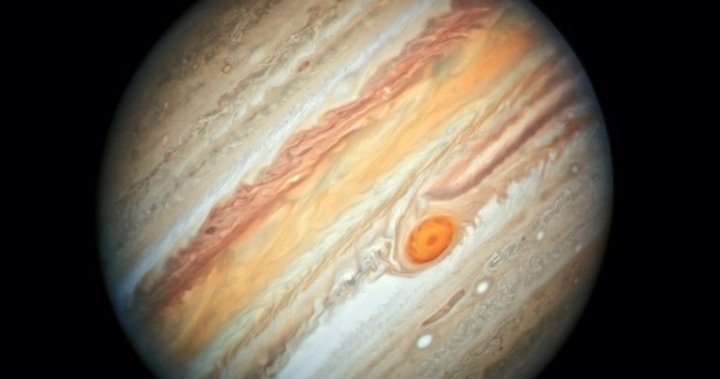
How to see Jupiter as it makes its closest approach to Earth in 59 years How to see Jupiter as it makes its closest approach to Earth in 59 years How to see Jupiter as it makes its closest approach to Earth in 59 years How to see Jupiter as it makes its closest approach to Earth in 59 years How to see Jupiter as it makes its closest approach to Earth in 59 years How to see Jupiter as it makes its closest approach to Earth in 59 years How to see Jupiter as it makes its closest approach to Earth in 59 years How to see Jupiter as it makes its closest approach to Earth in 59 years How to see Jupiter as it makes its closest approach to Earth in 59 years How to see Jupiter as it makes its closest approach to Earth in 59 years
Global News
Jupiter's four largest moons and gas banding should be visible with a good pair of binoculars, says NASA.
Stargazers looking to the sky Monday night will be able to clearly spot Jupiter as it reaches its closest point to Earth in 59 years.
In fact, NASA says the gas giant’s banding and several of its moons should be visible with a good pair of binoculars.
The giant planet will become visible when it reaches opposition, meaning it will rise in the east as the sun sets in the west — a phenomenon that happens every 13 months and typically makes objects in the sky appear brighter and closer than normal.
“Jupiter’s closest approach to Earth rarely coincides with opposition,” NASA said, “which means this year’s views will be extraordinary.”
“Outside of the Moon, it should be one of the brightest objects in the night sky,” NASA astrophysicist Adam Kobelski explained in a blog post.
Jupiter hasn’t travelled this close to the Earth since 1963 because Earth and Jupiter do not orbit the Sun in perfect circles. The planets pass each other at different distances throughout the year.
Monday night, the planet will be 561 million kilometres from Earth, the same distance as it was in 1963. At its farthest, Jupiter travels about 966 million kilometres away from our planet.
